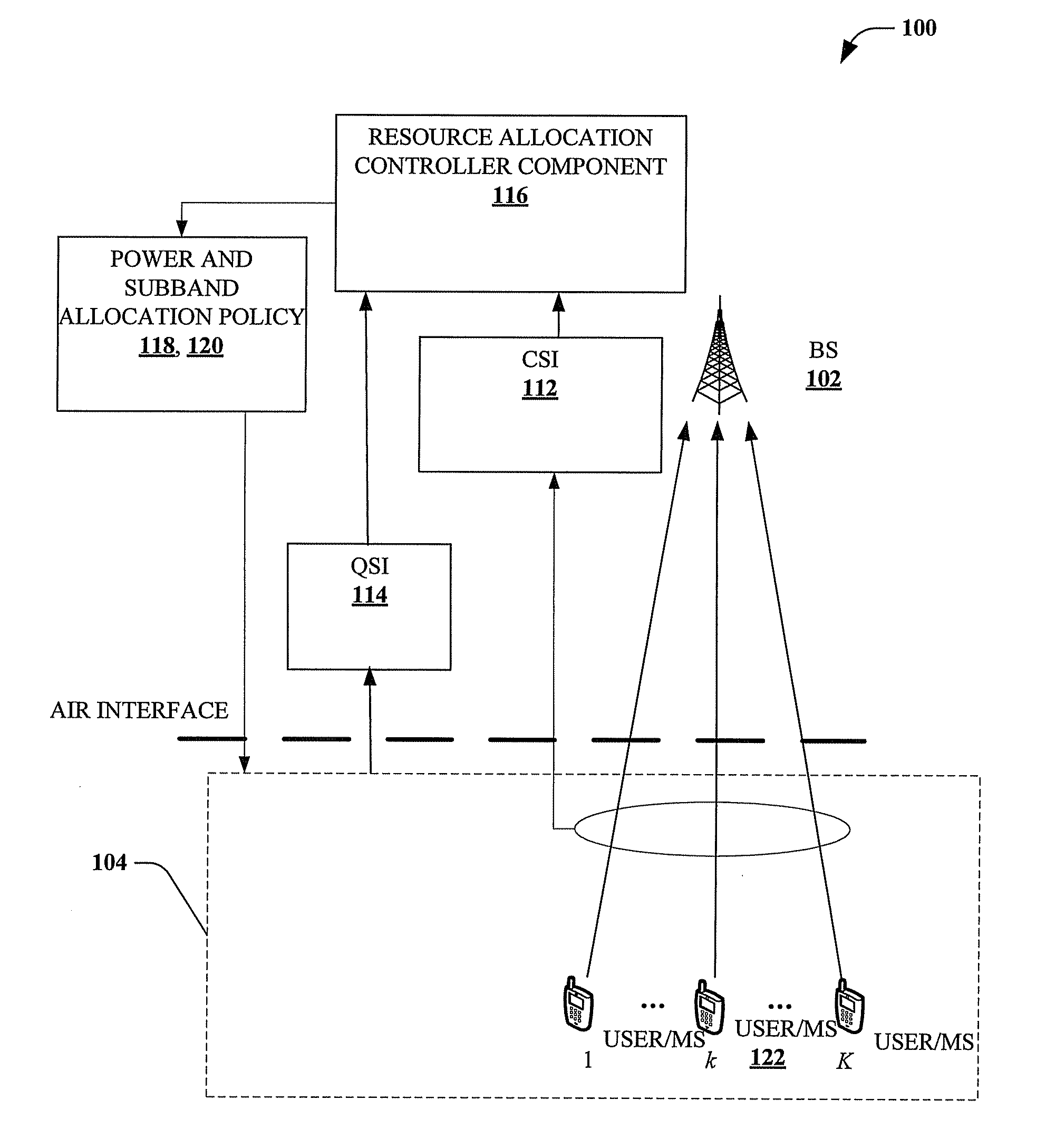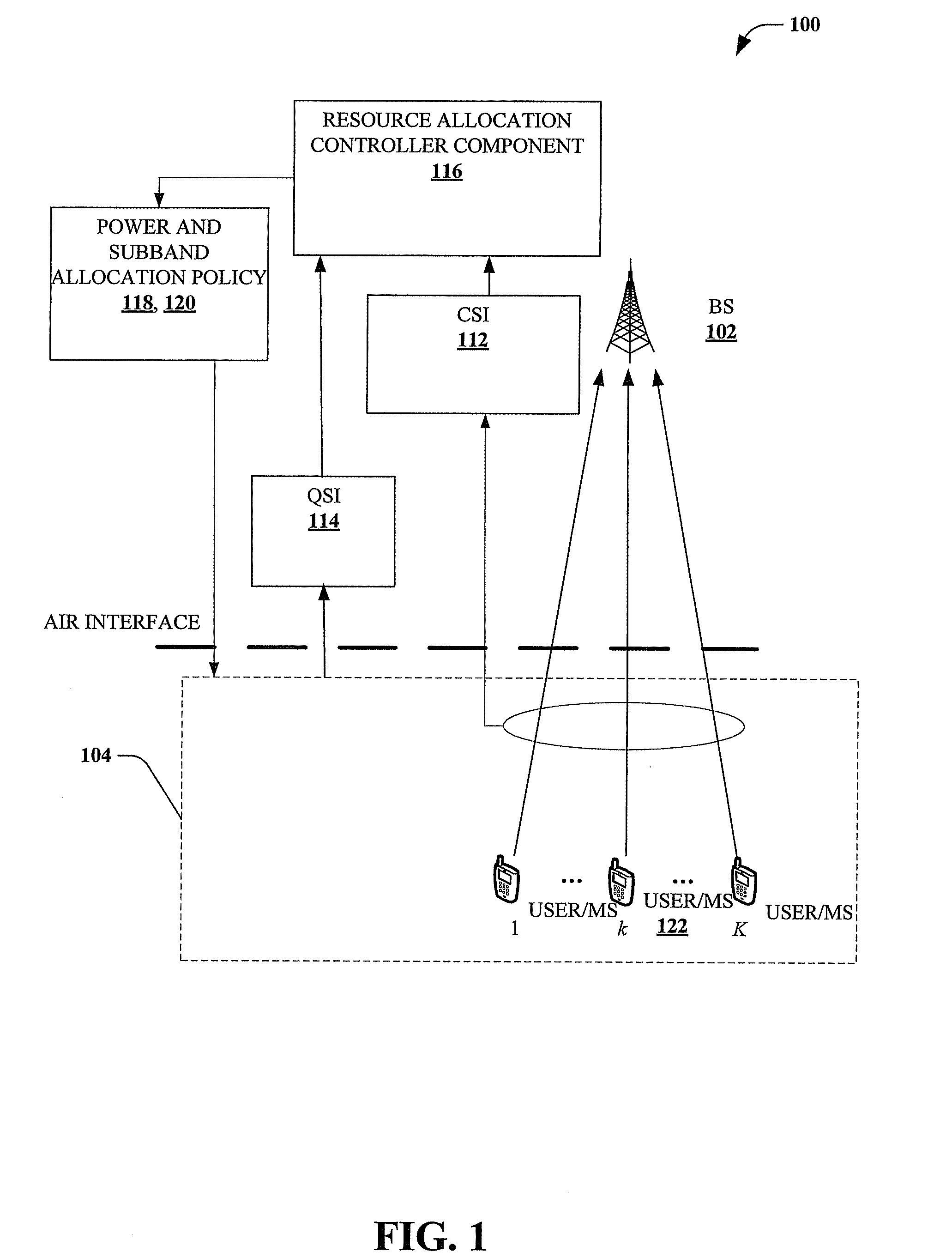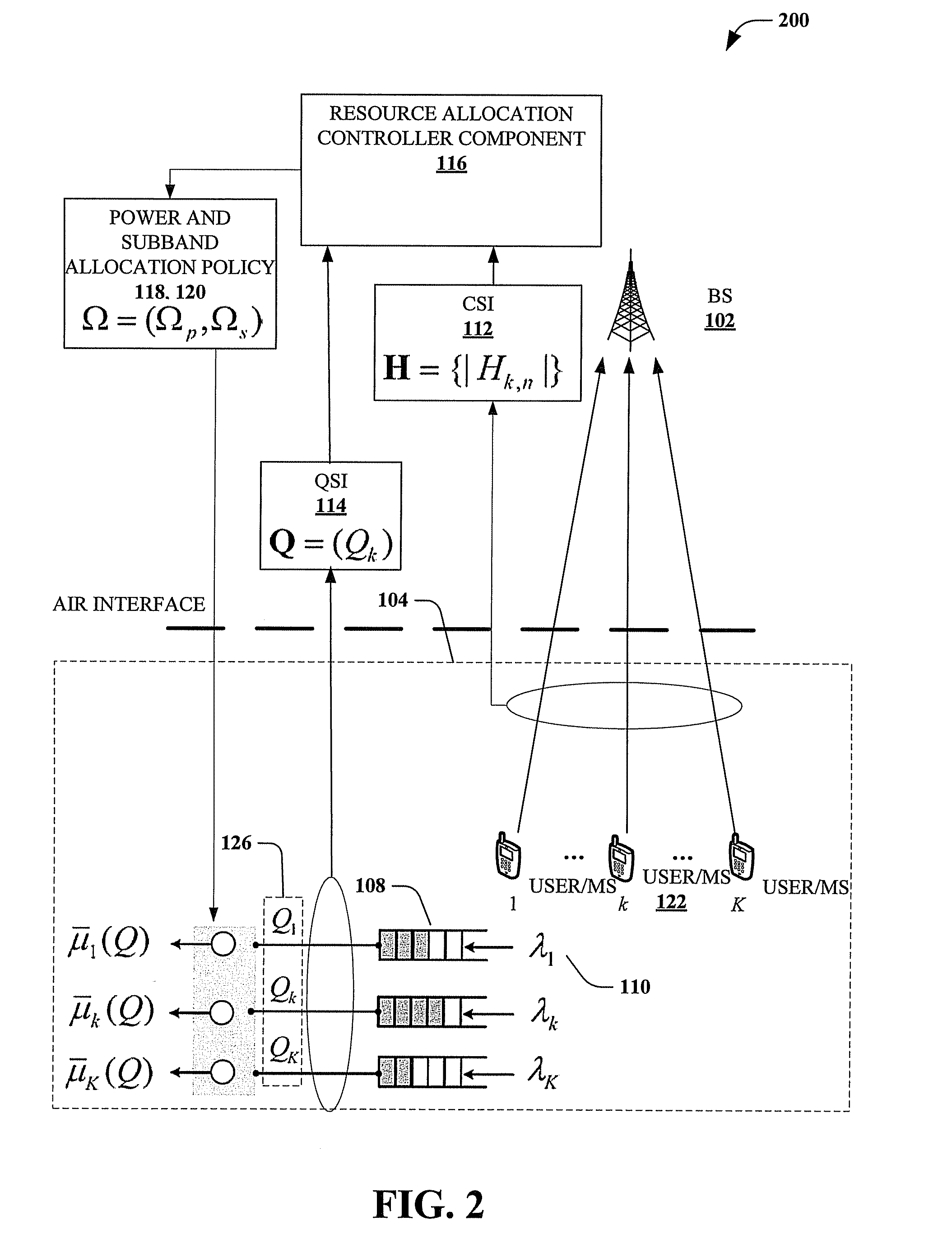Orthogonal frequency division multiple access (OFDMA) subband and power allocation
a technology of orthogonal frequency division and multiple access, applied in the field of wireless communications, can solve the problems of limited applicability, difficult or impractical extension to other situations, and the solution can be limited to systems involving large delays, so as to facilitate subband and power allocation, facilitate resource allocation, and wide range of performance and computational overhead trade-offs
- Summary
- Abstract
- Description
- Claims
- Application Information
AI Technical Summary
Benefits of technology
Problems solved by technology
Method used
Image
Examples
Embodiment Construction
Overview
[0029]Simplified overviews are provided in the present section to help enable a basic or general understanding of various aspects of exemplary, non-limiting embodiments that follow in the more detailed description and the accompanying drawings. This overview section is not intended, however, to be considered extensive or exhaustive. Instead, the sole purpose of the following embodiment overviews is to present some concepts related to some exemplary non-limiting embodiments of the disclosed subject matter in a simplified form as a prelude to the more detailed description of these and various other embodiments of the disclosed subject matter that follow.
[0030]It is understood that various modifications may be made by one skilled in the relevant art without departing from the scope of the disclosed subject matter. Accordingly, it is the intent to include within the scope of the disclosed subject matter those modifications, substitutions, and variations as may come to those skil...
PUM
 Login to View More
Login to View More Abstract
Description
Claims
Application Information
 Login to View More
Login to View More - R&D
- Intellectual Property
- Life Sciences
- Materials
- Tech Scout
- Unparalleled Data Quality
- Higher Quality Content
- 60% Fewer Hallucinations
Browse by: Latest US Patents, China's latest patents, Technical Efficacy Thesaurus, Application Domain, Technology Topic, Popular Technical Reports.
© 2025 PatSnap. All rights reserved.Legal|Privacy policy|Modern Slavery Act Transparency Statement|Sitemap|About US| Contact US: help@patsnap.com



